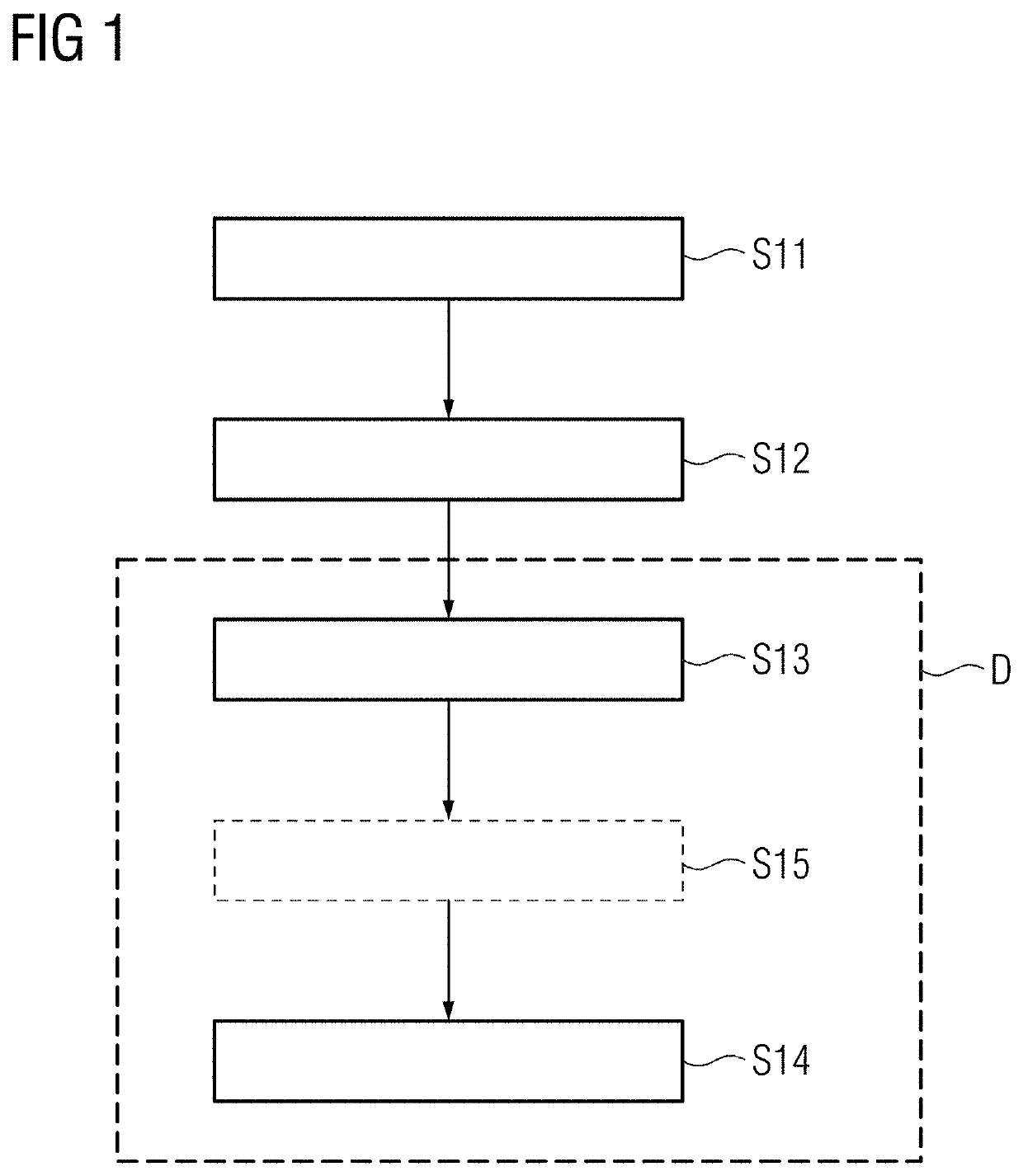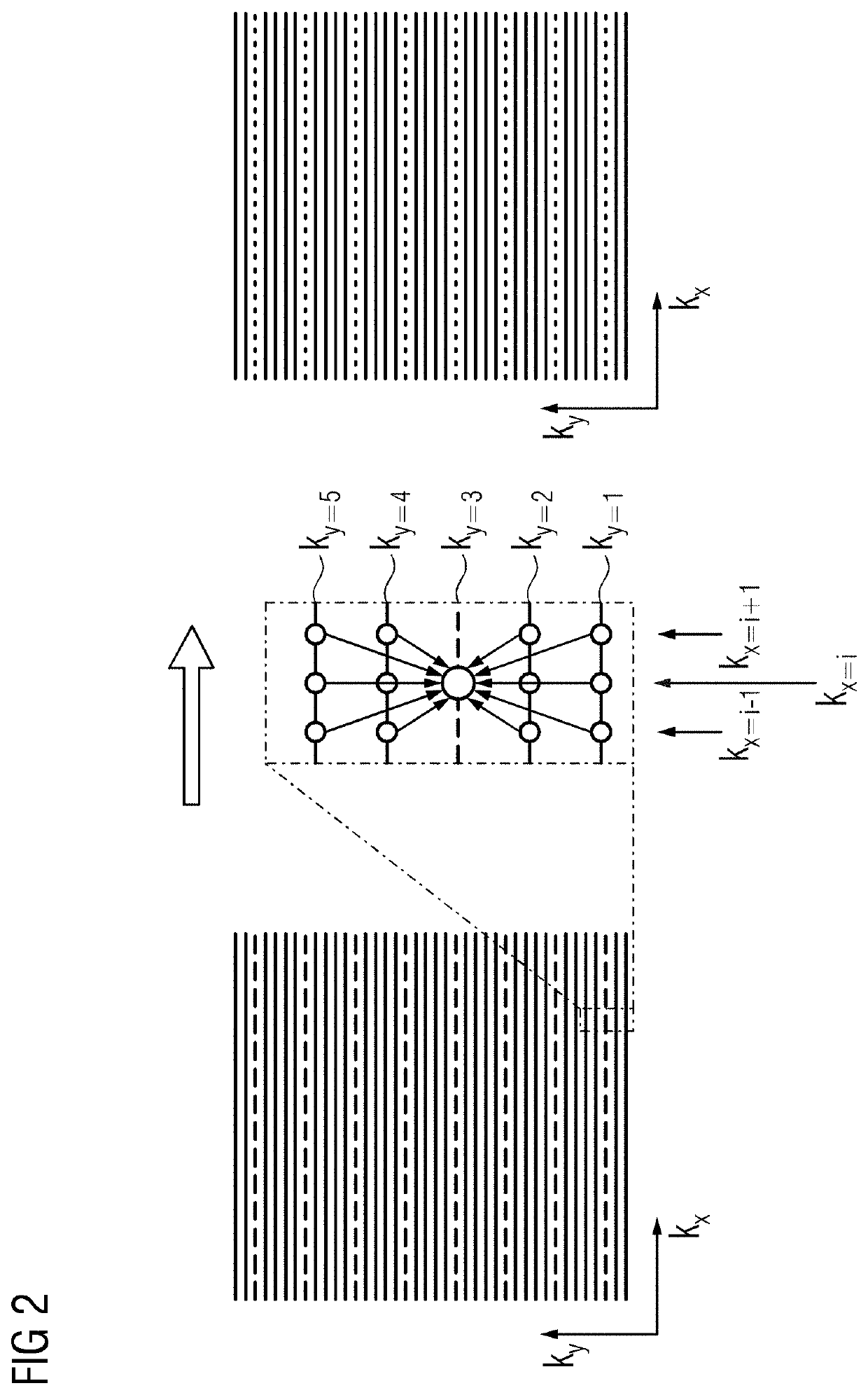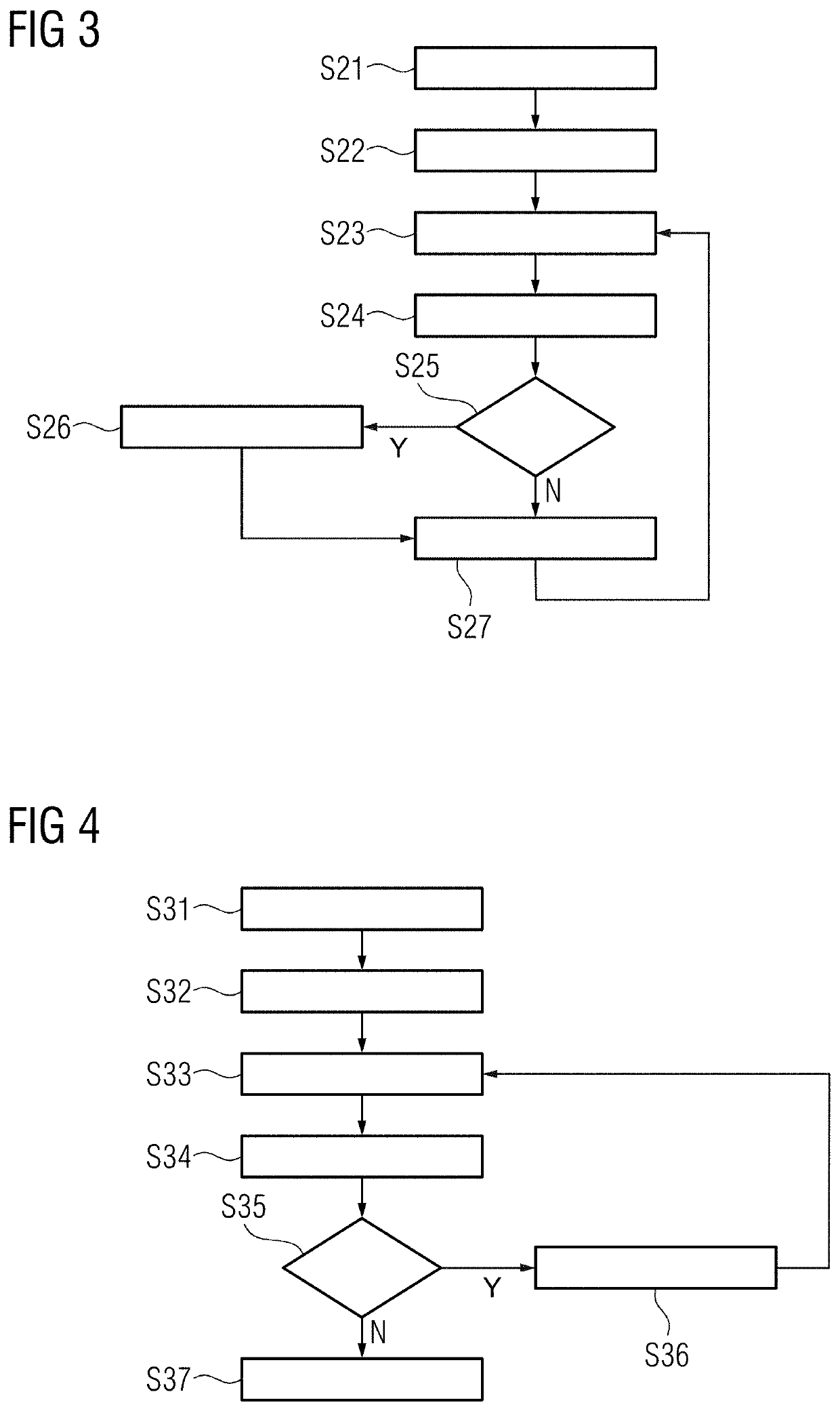Correction of MR object movements
a correction and object technology, applied in the field of correction of magnetic resonance objects, can solve the problems of limiting diagnosis, requiring new, correspondingly more time-consuming recording, etc., and achieve the effect of measuring instruments, and reducing the number of instruments
- Summary
- Abstract
- Description
- Claims
- Application Information
AI Technical Summary
Benefits of technology
Problems solved by technology
Method used
Image
Examples
Embodiment Construction
[0054]FIG. 1 shows a flow diagram of a first embodiment of a method.
[0055]The flow diagram includes a first act S11, in which a turbo spin echo (TSE) recording of a magnetic resonance (MR) object with multiple TSE sequences or echo trains is performed.
[0056]In a second act S12, information about which echo train(s), if any, is movement-impaired is received. As a result, at least one movement-impaired echo train may be identified prior to the performance of the correction. The information may, for example, be obtained by external hardware (e.g., a camera, a pilot tone method, or a respiratory sensor) or sequence-inherent navigators.
[0057]In a third act S13, k-space rows pertaining to movement-impaired echo trains are replaced by k-space rows reconstructed by a GRAPPA method. The remaining, non-movement-impaired k-space rows are retained without change.
[0058]In act S14, an MR image may be generated from the k-space resulting from act S13.
[0059]After act S13, it is possible to check in...
PUM
 Login to View More
Login to View More Abstract
Description
Claims
Application Information
 Login to View More
Login to View More - R&D
- Intellectual Property
- Life Sciences
- Materials
- Tech Scout
- Unparalleled Data Quality
- Higher Quality Content
- 60% Fewer Hallucinations
Browse by: Latest US Patents, China's latest patents, Technical Efficacy Thesaurus, Application Domain, Technology Topic, Popular Technical Reports.
© 2025 PatSnap. All rights reserved.Legal|Privacy policy|Modern Slavery Act Transparency Statement|Sitemap|About US| Contact US: help@patsnap.com



